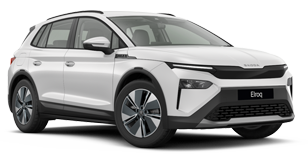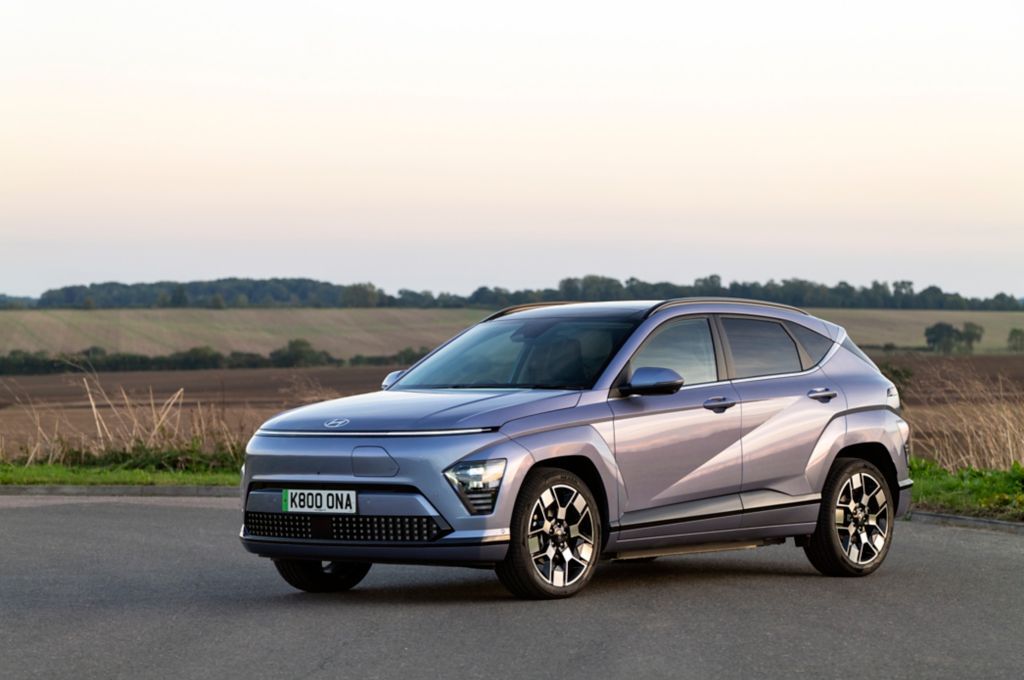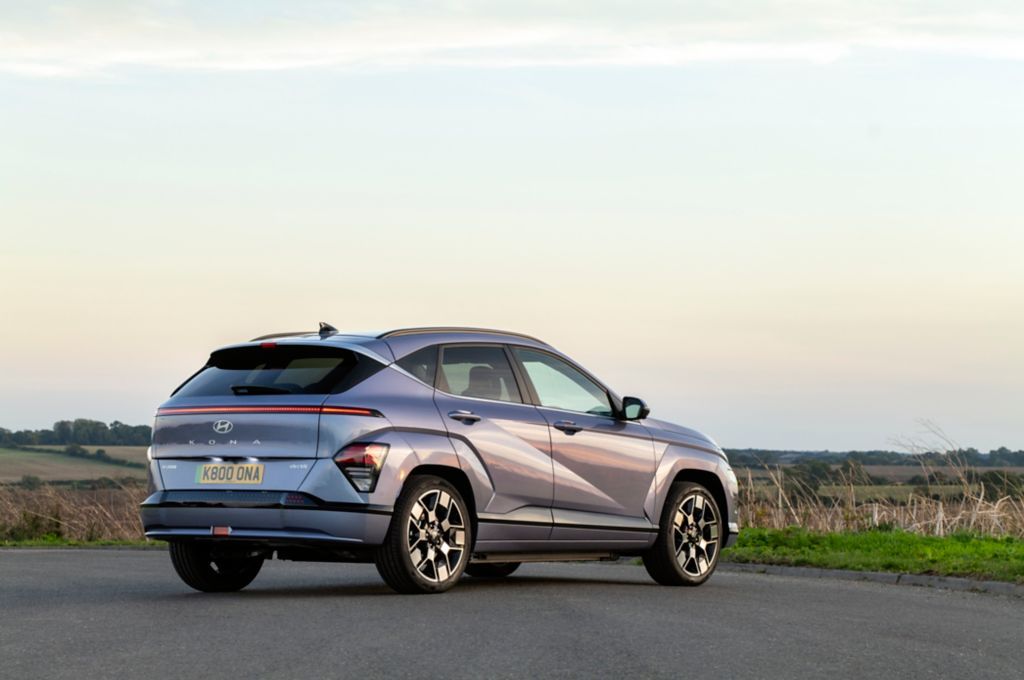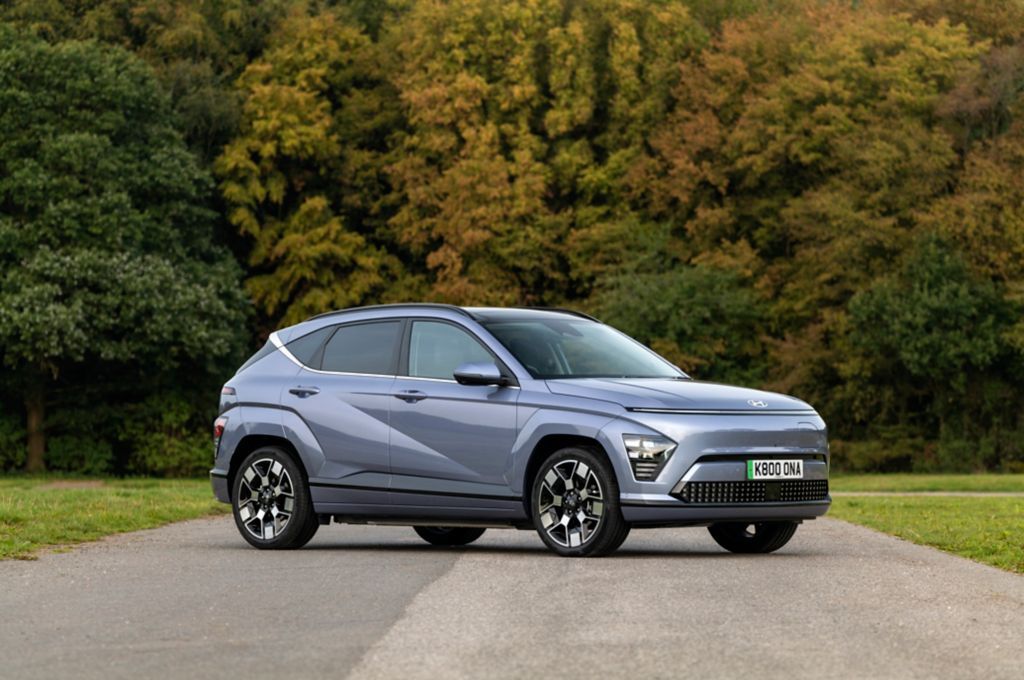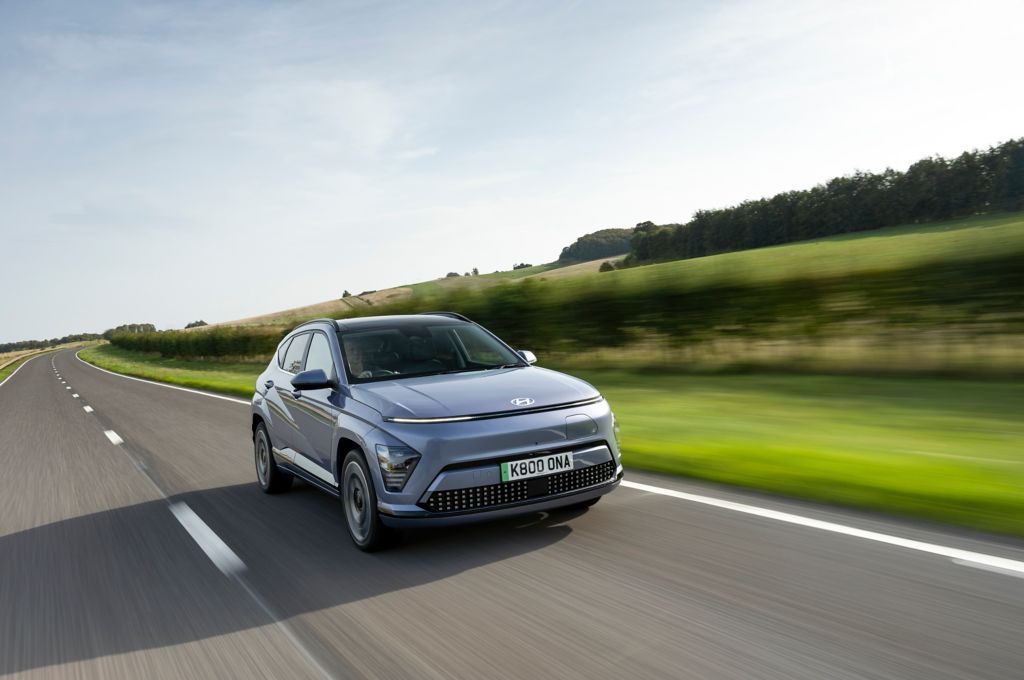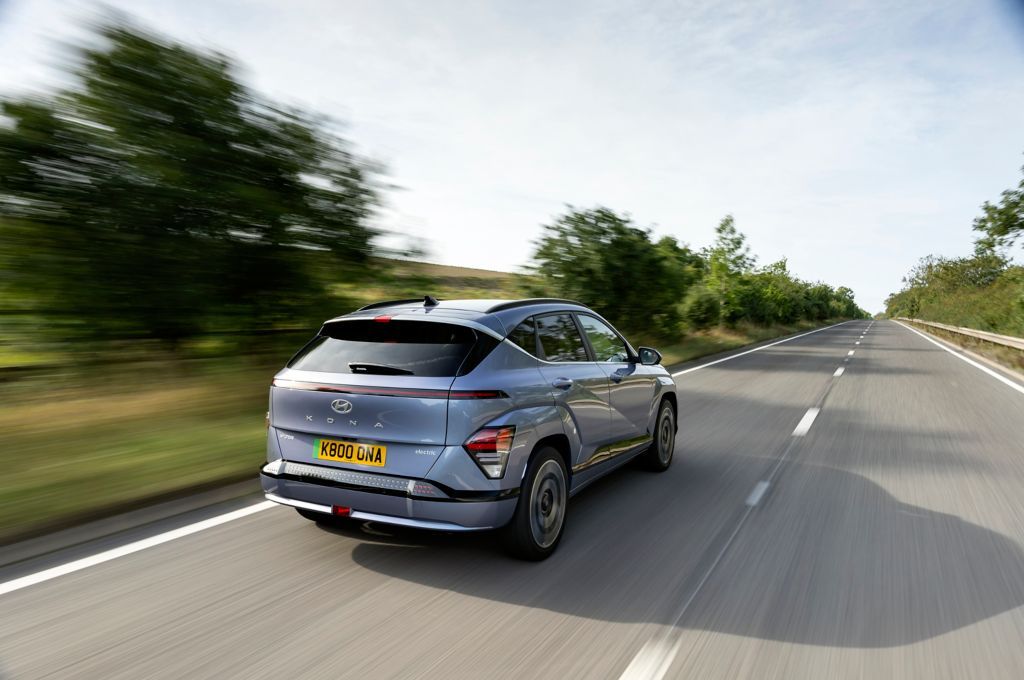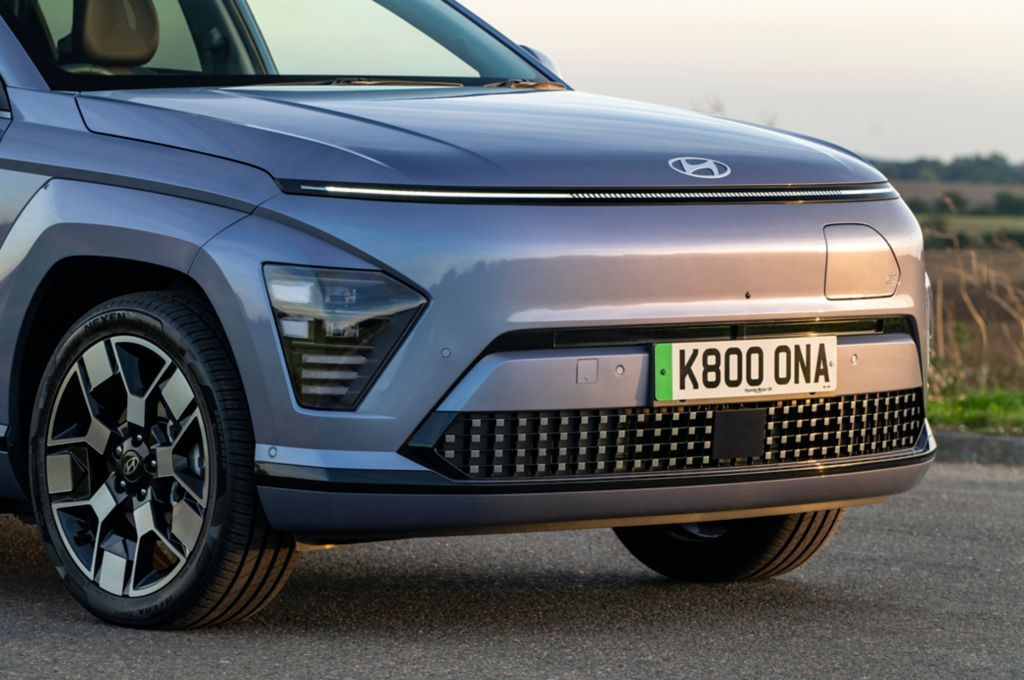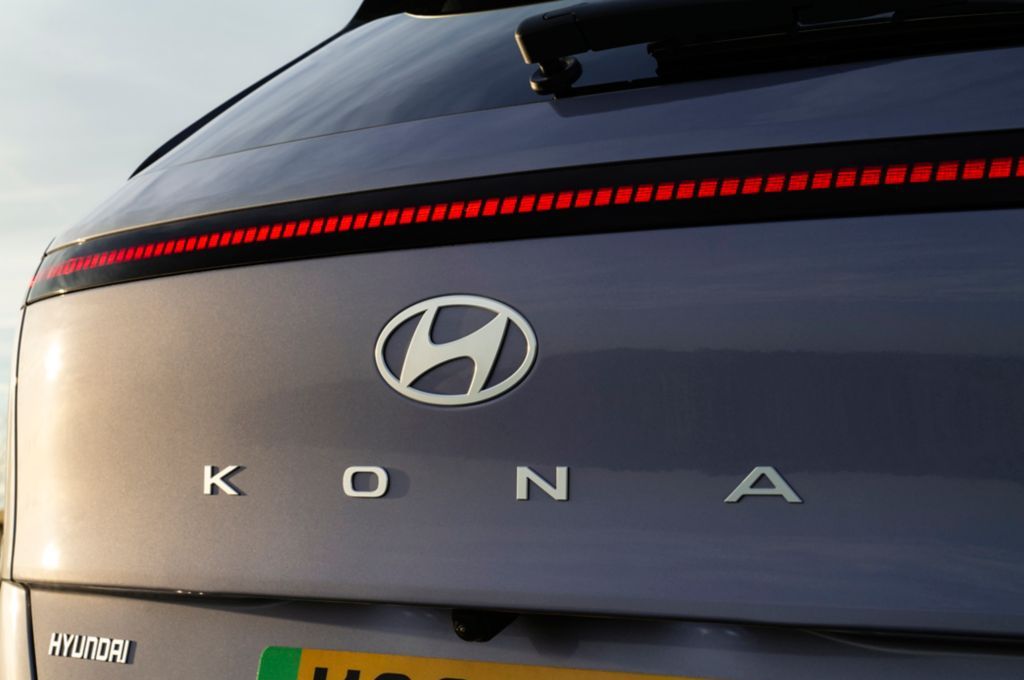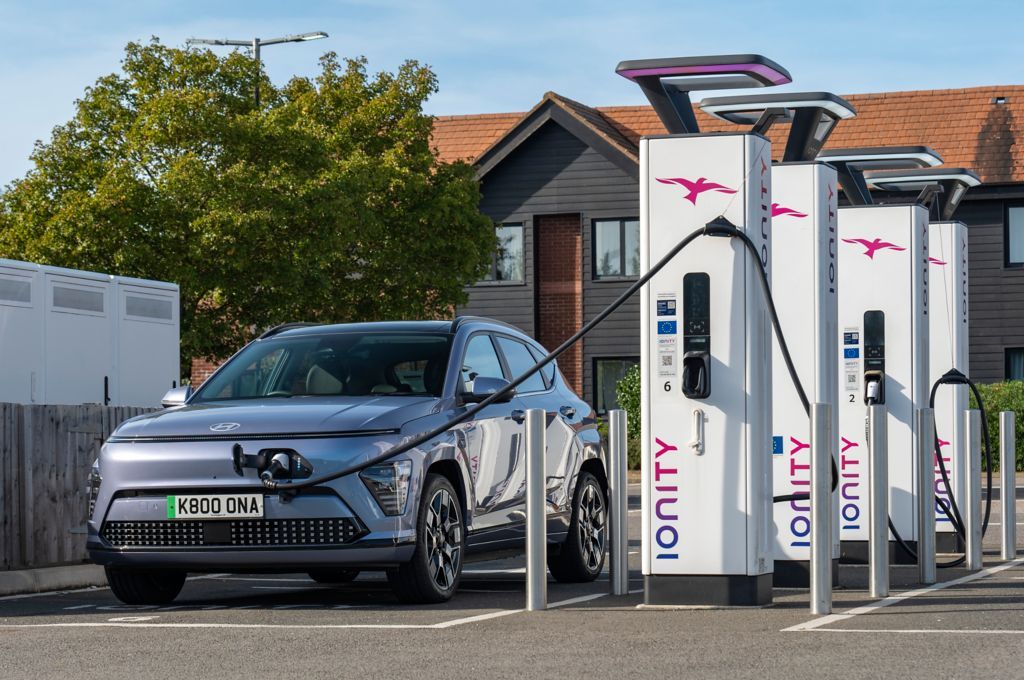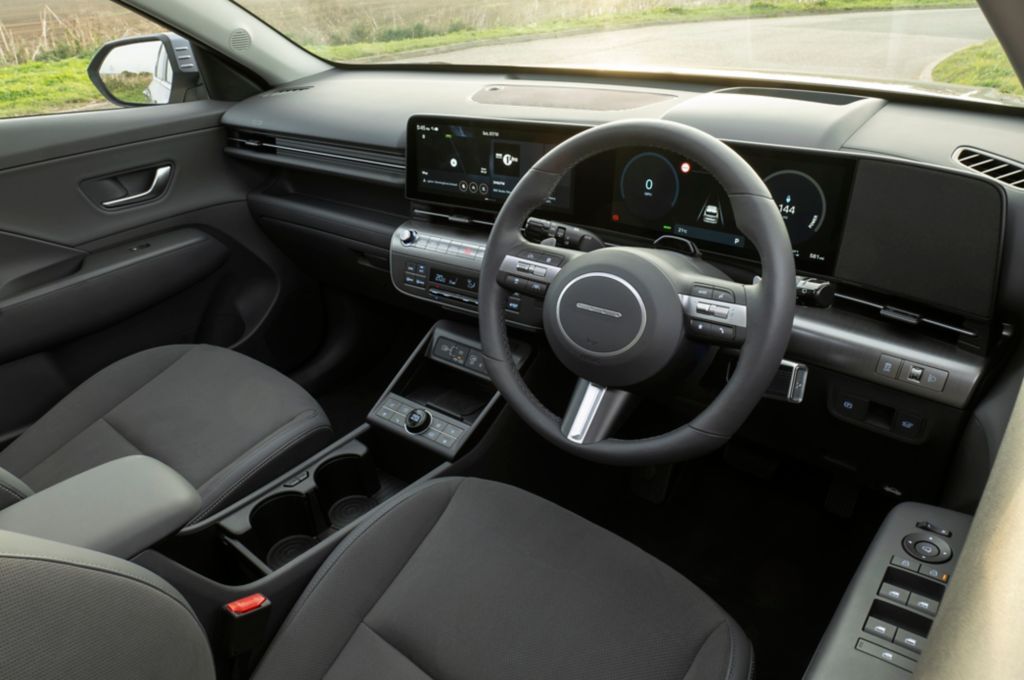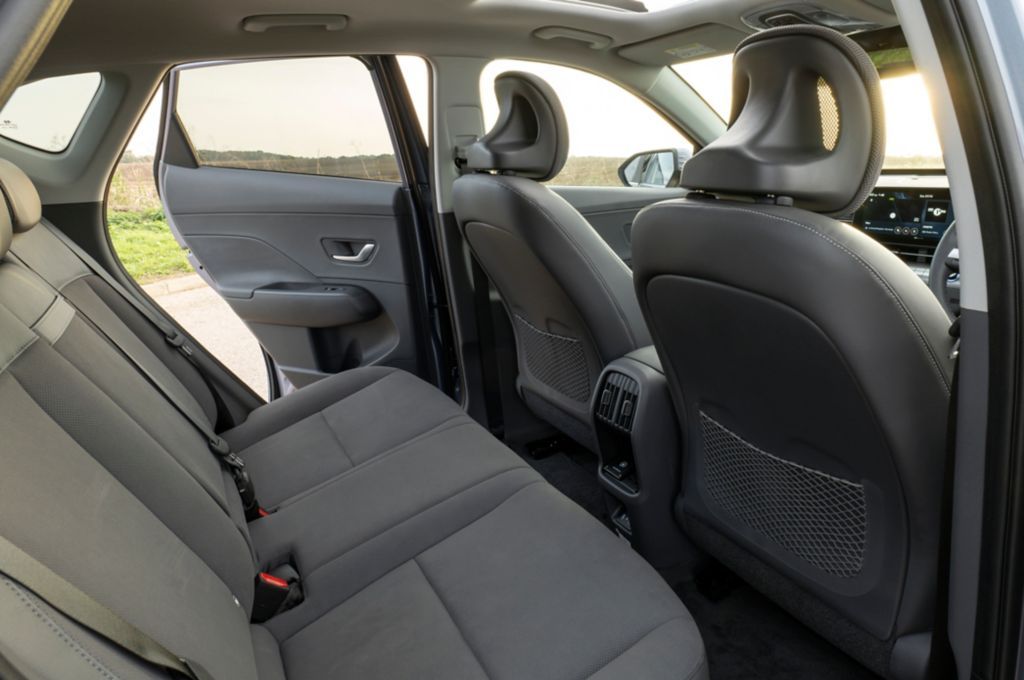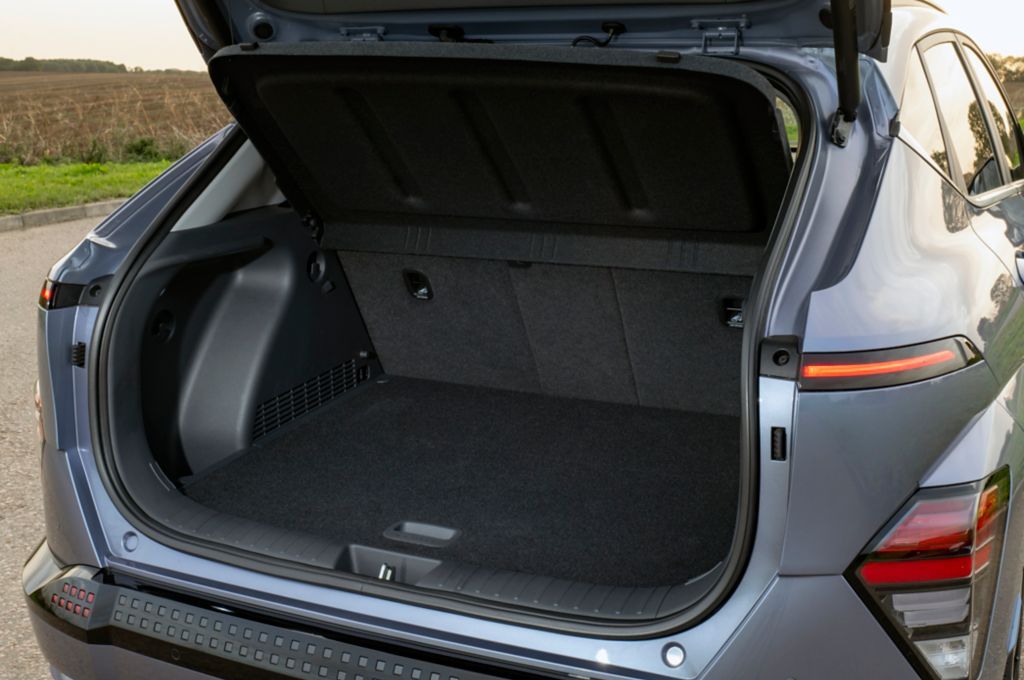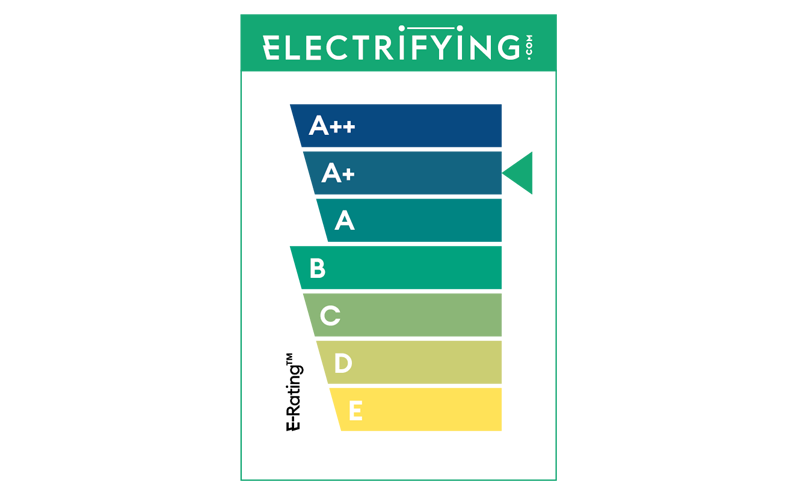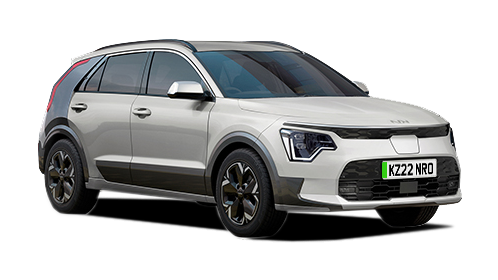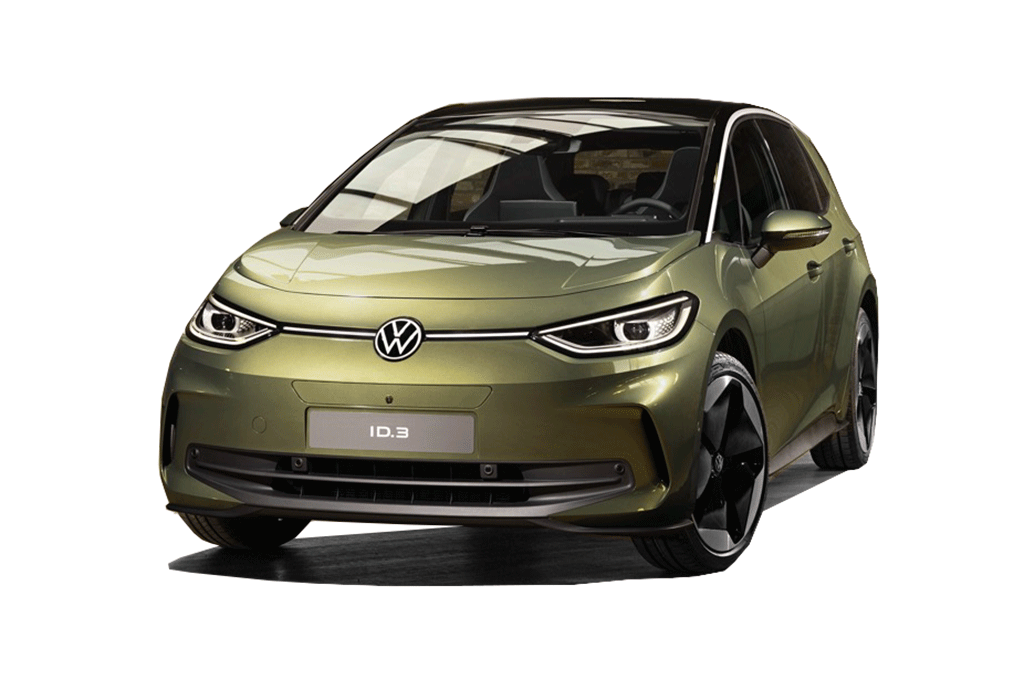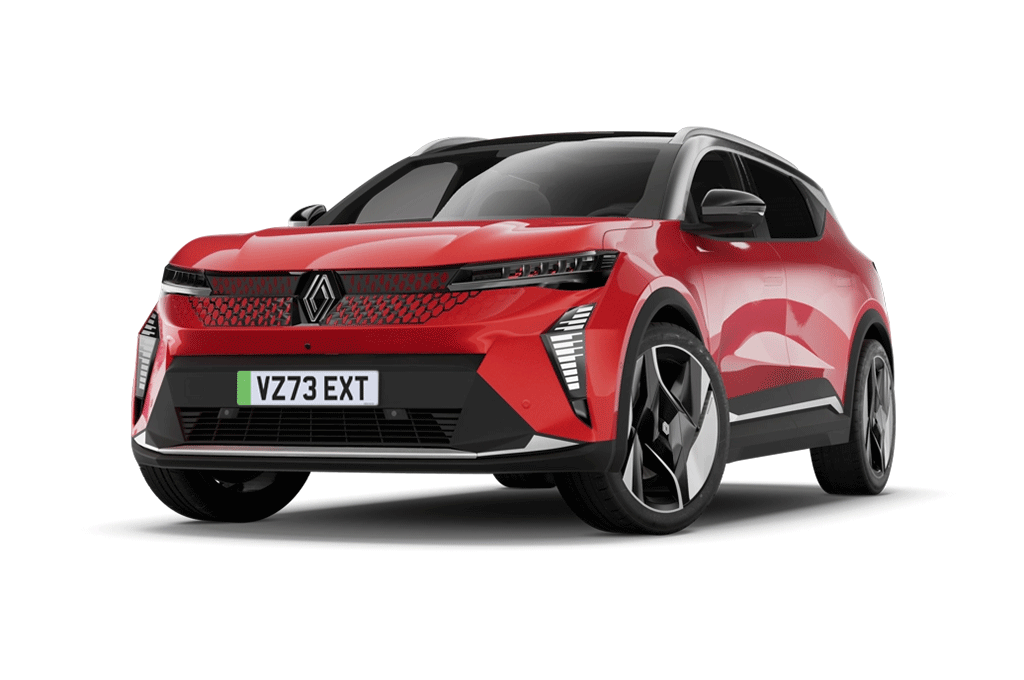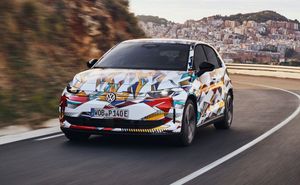Introduction and model history
The first-generation Hyundai Kona was introduced in 2018, with the Kona Electric on offer alongside a variety of petrol and hybrid models. It was hugely popular car, but the competition moves on quickly when it comes to electric cars, and by 2023 Hyundai introduced this new, second-generation Kona Electric.
A fresh new look is marked out by the full-width LED lights and smooth surfacing, and the Kona has also grown in length to provide a bigger boot – one of the chief issues with the original model. It’s also been primped and beautified inside, with a more appealing array of textiles and interior finishes; which it needs, to take on the likes of the Renault Scenic E-Tech, VW ID.3, Peugeot E-2008, Volvo EX30 and Cupra Born. Not to mention, of course, the Kia Niro EV that shares the same platform and tech as the Kona.
One way that the Hyundai is differentiated from the Kia, is that the Hyundai is available with two battery options rather than the single battery offered in the Kia Niro. In the Kona Electric, there’s an affordable, shorter-range model offered with a 48.4kWh battery that’s only available on the entry-level Advance trim and achieves a WLTP combined range of 234 miles.
However, most buyers will opt for the bigger, 65.4kWh battery with its WLTP driving range of 319 miles, and variety of trims that include sporty-looking N Line and N Line S variants. It’s efficient in the real world, too, so you’ll get a decent real-world driving range of around 240 miles even in winter, or around 300 miles in summer.
The Kona Electric is good to drive, too. Not as fun as the Cupra Born, perhaps – there’s a bit too much body lean and not enough steering feel for that. But the Kona is smooth, quiet and confident, so will make a great commuter or family car, especially as there’s now good amounts of passenger and boot space. The infotainment touchscreen is easy to use and has all the features you want, and is better than those in the VW ID.3 and Cupra Born.
Verdict
Given the competitive prices and finance deals, the Hyundai Kona Electric has a lot going for it. There’s loads of standard equipment, a roomy and durable-feeling interior, good real-world range and confident on-road manners. It isn’t as fun or as practical as some alternatives, and there are similarly priced rivals – such as the Renault Scenic E-Tech – that go further and have an even nicer interior. Even so, if you can get a good deal then the Hyundai is a really well-rounded and highly recommendable electric family car.
Like the Hyundai Kona Electric? Try these...





